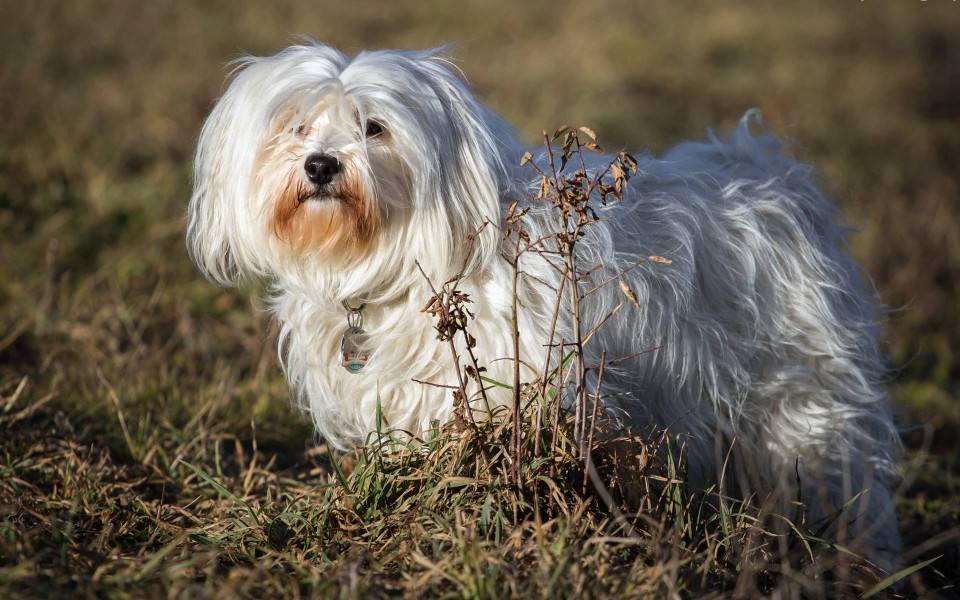Havanese
IUCN
LCBasic Information
Feature
The Havanese is elegant and sensitive, a natural companion dog. It is particularly attached to its owner and very friendly to children.
Distribution and Habitat
Native to Cuba
Appearance
It has a broad flat skull, large oval eyes, and abundant fur. The neck is of medium length, neither too long nor too short. The back line is straight, slightly upturned at the hips; the flanks are slightly upturned, the ribs are rounded, the tail is erected high, arched to the back and has long, fine dark hair. When standing, a drooping tail is more appropriate. The bone marrow of the front legs is relatively straight, the length from the elbow to the withers is equal to the distance from the foot to the elbow, the hocks can be removed, the feet are compact, the toes are arched, and the pads are thick. In or out feet are considered a fault. The hind legs are relatively short, well-boned, muscular, with a proper angle, very straight when viewed from the back, the hocks can be removed, and the feet are like the front feet. The faults are also like the front feet.
The coat color is often a single base color such as gold, silver, white, blue, etc. with several spots, among which the pur
Details
The Havanese is the national dog of Cuba and the only native breed there.

The Havana is an ancient breed in the Bichon family. There are two theories about its ancestor. Some people believe that at the end of the 18th century, farmers from a village called Emilia in Italy took several "Bologna" puppies and sailed from Bologna to Argentina. They mated these puppies with South American poodles, thus breeding the South American Bichon. After these Bichon entered Cuba, the locals named it "Havanna" after the place name of Cuba, so its alias is Havanais. Others believe that it is the descendant of the Maltese brought to the West Indies by the Spanish. However, judging from its appearance and fur, it obviously has the characteristics of the Italian Bologna dog (i.e. the Bologna Bichon) and the South American poodle, so most people take the former theory as the basis. Most of the Havana Bichon raised in European countries are imported from Cuba.
Havanese used to be a living toy that South American nobles never tire of playing with and a symbol of noble status. Now, they have become the darling of American dog lovers and one of the favorites of American dog lovers. Since the birth of the Bichon Ha-vanais, its fate has been determined by people, and it is only for people to enjoy and have fun. It almost has the natural instinct to distinguish between the poor and the rich, the low-class and the upper-class, and it is happy to shuttle around under the feet of nobles, wag its tail, and flatter them, in order to live a good life with fine clothes and delicious food. This kind of comfortable and labor-hating dog life is undoubtedly a bad example that confuses people's hearts and tempts them to yearn for it, so many people are learning from them, preferring to be a first-class dog than a third-rate person. It is a hybrid born from the mating of an Italian "farmer" and a South American "lady". It has the plump figure of a South American lady and the wild beauty of an Italian handsome man. The combination of the two undoubtedly makes it a gifted and noble dog.
The Havanese is very flexible. All transitions from pure white to pure black, including champagne, gold, silver, blue, chocolate, etc., or white with flowers, or even any color in the tricolor are allowed in the Havanese standard. It can be said that any color is allowed in the Havanese standard, so the Havanese is also called the "palette" of the dog world, which is very interesting.
Today's Havanese is a satisfying, friendly, strong, short-legged small dog. When training, they become excellent candidates for obedience training because of their friendly character.
Protect wild animals and stop eating game.
Maintaining ecological balance is everyone's responsibility!








